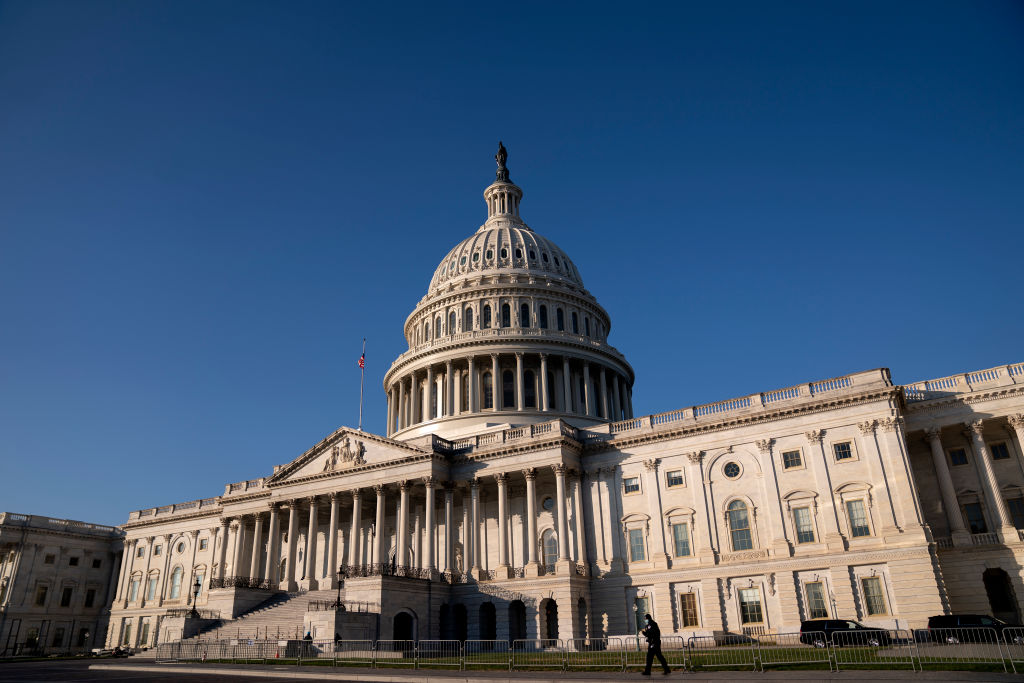The New Democrat Coalition is suddenly a hot ticket on Capitol Hill. The 110-member strong center-left group is seeing an uptick in member interest, including several applicants who also belong to the competing Congressional Progressive Caucus.
But some in New Dem leadership told us they’re worried that newly interested members with leftist voting records are only joining to boost their reelection efforts. New Dems, which promotes bipartisanship and a pragmatic economic message, is sometimes at odds with CPC, the most far-left group in the Democratic Caucus.
“It’s a problem,” one New Dem member told us. “Technically, there wouldn’t be an issue with progressives joining, but if they’re doing it because it’s the political zeitgeist at the time, then it’s a problem.”
One member of New Dem leadership added that the group is going to take positions that progressives “aren’t comfortable with” and that’s something these Democrats need to consider when vetting who joins the caucus.
Since the November election, at least 10 members have applied to join New Dems, including at least three CPC members — Reps. Brad Sherman (D-Calif.), Mike Levin (D-Calif.) and Melanie Stansbury (D-N.M.).
Levin represents a purple district and was a DCCC Frontliner last cycle. Some current New Dem members raised concerns about Stansbury being too progressive for New Dems, but sources close to the New Mexico Democrat said she’s being received positively while going through the process to join.
To become New Dems, members must fill out a questionnaire, meet with the group’s leadership and then pass a caucus-wide vote. New Dem leadership will also look at candidates’ voting records.
Additionally, New Dems bars any member from joining the caucus eight months out from an election to prevent having solely campaign-motivated members.
New Dem Chair Brad Schneider (D-Ill.) told us he expects the group will be adding “multiple members” in the coming weeks and that applicants must meet with the group’s leadership and be voted on by the whole caucus to be admitted.
“We have a strong sense of who we are and what we want to accomplish,” Schneider said. “We look at everyone on a case-by-case basis.”
Double dipping: Typically, it’s not unusual for members to be a part of CPC and New Dems at the same time. For example, Reps. Andrea Salinas (D-Ore.) and Jennifer McClellan (D-Va.) are in New Dem leadership while also being CPC members.
But for New Dem members who are trying to join the CPC, they have to go before the CPC board to make their case.
To Democrats who belong to New Dems and CPC, it’s a politically advantageous way to express personal progressive values while being able to tout their bipartisanship by floating their New Dem status.
“I’ve got a traditionally industrial base in my district and the poorest big city in the country, so there’s a lot of cross-cutting issues,” Rep. Mary Gay Scanlon (D-Pa.), who belongs to both groups, told us. “Membership in both helps me navigate a lot of competing interests.”
The groups also sometimes collaborate. Schneider was on the same press call with CPC Chair Greg Casar (D-Texas) on Thursday to message on the tax fight.
Rep. Becca Balint (D-Vt.), a member of the CPC’s leadership team, said she sees members belonging to both groups as positive. She cited New Dems’ messaging wins in districts won by President Donald Trump as a potential asset for CPC.
“The more that we have cross-pollination, the better for us because we get in our little silos and our message is not as strong as it could be,” Balint told us. “I have more people who voted for Trump in Vermont this time, and I want to understand that.”





